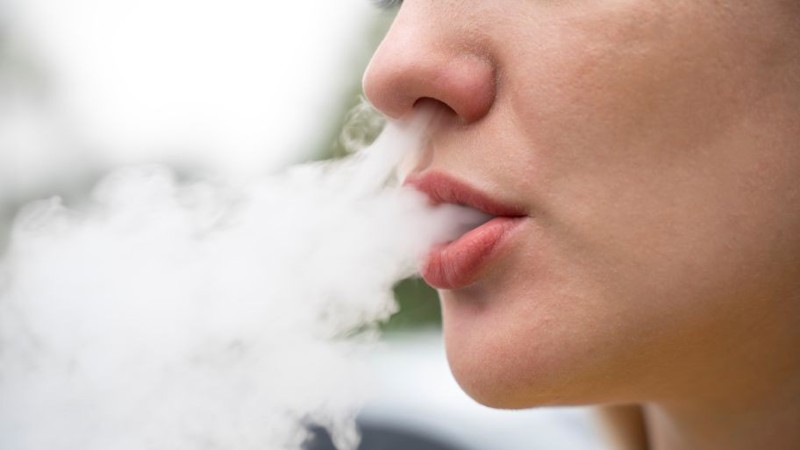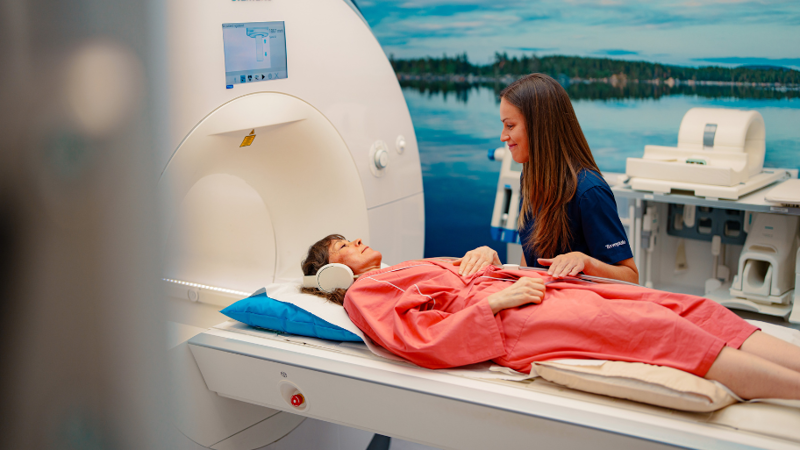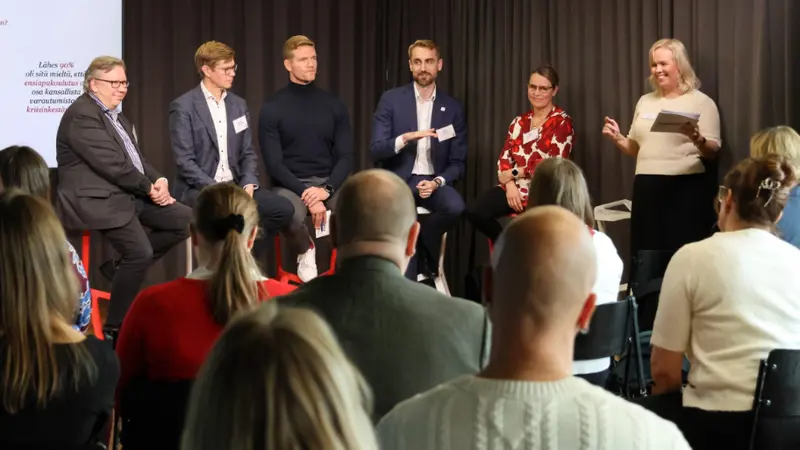Nicotine satches and e-cigarettes already pose a threat to oral health
Nicotine sachets use is increasing, especially among working-age men and women. Among young people, e-cigarette smoking has even tripled in five years. It is already known that nicotine sachets and e-cigarettes cause similar changes in the mouth as traditional smoking. Ritva Lindblad, senior dentist at Terveystalo, warns that we are only now beginning to see the first signs of the products' effects on oral health.

The use of icotine bags and electro-packaging, or vaping, has increased alarmingly in recent years. According to the THL Healthy Finland survey, one in four men under the age of 40 already uses nicotine sachets.
Among young people, e-cigarettes are increasingly common: in 2024, 21% of young Finns had used e-cigarettes in the past 30 days, compared to 7% in 2019, according to the European School Survey.
Ritva Lindblad, senior dentist at Terveystalo, is concerned by these figures.
- We are only now seeing the first signs of the impact of these products on people's oral health. We know very little about the effects of long-term use.
We know very little about the long-term effects
However, it seems that as more research data becomes available, the perception of the harms of these products will also become stronger.
- Nicotine sachets and e-cigarette packaging have a huge impact on oral health in many ways and can lead to serious health problems. It is therefore extremely important to raise awareness of the harms of these products. I also think it is important for dentists to ask more specific questions about the use of both nicotine products and e-tobacco in their surgeries.
Which causes darkened teeth, nicotine or tobacco?
The effects of nicotine on public health are already well known: nicotine is highly addictive, causes heart and lung disease, impairs brain function and increases the risk of several cancers.
- In the mouth, nicotine pouches cause mucosal soreness and blisters and dry mouth. Nicotine also slows down the healing of wounds and bone, which can be harmful and cause complications, for example after tooth extraction," says Ritva Lindblad, a senior dentist.
Nicotine also stains teeth.
- People often mistakenly think that the tobacco in the cigarette they smoke causes darkening, but yes, it is the tar and nicotine in tobacco.
One reason for the popularity of nicotine sachets is the many flavour options. Particularly popular with young people is the fresh menthol, which increases nicotine absorption.
Lindblad warns that nicotine sachets may actually contain even more nicotine than cigarettes or snuff, as nicotine sachet labels are not always accurate.
- Studies have found that nicotine sachets can contain significantly more nicotine than what is stated on the packet.
In e-smoking, many health problems are caused by the vaporisation of flavourings
According to Ritva Lindblad, e-smoking has similar effects on oral health as traditional smoking.
- The clearest research evidence to date is that vaping increases the risk of periodontitis, the inflammation and gradual loss of the attachment tissues of the teeth, which can eventually lead to tooth loss. Up to 74% of Finnish adults have periodontitis.
Shivering increases the risk of developing periodontal disease.
According to Lindblad, a recent research review in the German journal Zahnaslääkäri, international and national studies on e-smoking have also found an increase in tooth decay, oral pain and dryness, and poor oral health in general.
- Decay may be linked to the fumes of e-cigarettes, as bacteria thrive in the heat.
Lindblad points out that vaping is not safe even when there is no nicotine in the e-cigarette.
- Many of the substances added to e-cigarettes can be harmful to health, for example by containing carcinogenic carcinogens, precisely when they are vaporised. Flavourings such as cinnamon and vanilla are known to become harmful when vaporised.
Read more occupational health articles

Terveystalo's digital services have been awarded the internationally recognized ISO27001 information security certification.
Terveystalo's information security practices, processes, and risk management are in line with international best practices.

Does massage help relieve stress? – Touch restores and calms the body and mind
Stress is not always visible on the outside, but the body does show signs when the strain increases. According to Lassi Ylönen, a trained massage therapist at Terveystalo Rela, the body often communicates stress through subtle signs.

Circular economy and artificial intelligence boost performance and improve care
At the heart of sustainable healthcare, technology serves as a tool for improving both the quality of care and accountability. Terveystalo favors solutions that combine sustainability, cost-effectiveness, and medical expertise.

Psychologist: How to make Christmas a relaxed and personal celebration
For many, the anticipation of Christmas begins when cities are decked out in seasonal lights and the first chocolates, calendars, and gingerbread cookies appear on store shelves. Christmas carols ring out and the Tonttuparaati choir sings “Kiire jo on! Kiire jo on!” (Hurry up! Hurry up!). This warm and atmospheric celebration also brings other feelings to mind: how on earth can we get through all this without losing our joy and peace in the rush?

Terveystalo and Gosta Labs deepen their cooperation: the goal is to streamline work with a superior patient information system
Terveystalo is deepening its cooperation with Finnish health technology company Gosta Labs and investing €1 million in the company as a minority investor. The aim is to jointly develop artificial intelligence solutions that improve the quality of care and the efficiency of reception work as part of Terveystalo's new patient information system, Terveystalo Ella.

First aid preparedness in companies requires action and courage
First aid skills increase resilience, but a barometer survey of Finnish organizations' first aid capabilities published in October reveals that the number of trained personnel is alarmingly low.